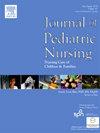The use and prevention of procedural restraint in children – A scoping review
IF 2.1
4区 医学
Q2 NURSING
Journal of Pediatric Nursing-Nursing Care of Children & Families
Pub Date : 2024-11-01
DOI:10.1016/j.pedn.2024.10.006
引用次数: 0
Abstract
Problem: In healthcare facilities, restraint may be used on children to perform treatments or procedures. Restraint can be harmful, and little is known about how to prevent the use of restraint during medical procedures. A scoping review was conducted to find and map knowledge about (1) the use and prevention of restraint and (2) approaches, such as interventions and guidelines, available to prevent the use of restraint. Eligibility criteria: This review was conducted following Arksey and O’Malley's framework, the JBI framework for scoping reviews, and the PRISMA-ScR (Protocol registration number GN5R3). Medline, EMBASE, PsycINFO, Epistemonikos, CINAHL, Cochrane Library were searched sept 2023. The search encompassed texts about children 1–18 years of age undergoing procedures conducted in non-psychiatric health care facilities. Sample: The sample size was 2943 texts, and 288 texts met the inclusion criteria, of which 188 were considered research. Results: Non-research texts consisted of reviews, demonstrations, opinions, and guidelines. The research lacked definitions of restraint though they described observations and attitudes toward restraint. Eight studies reported children's experiences. No evidence of how to prevent restraint was found, only reduction. Eleven guidelines were identified. Conclusions: Few approaches have addressed how to reduce and prevent the use of restraints. Lack of a clear and united understanding and definition of restraint hinders the development of effective trials and guidelines. Implications: Going forward, it is important to develop and explore approaches that build upon existing knowledge concerning restraint and positive procedural practice, including healthcare personnels competence, attitudes, and resources.
儿童程序性约束的使用和预防--范围界定审查。
问题:在医疗机构中,可能会对儿童使用束缚手段来进行治疗或手术。束缚可能有害,而人们对如何防止在医疗过程中使用束缚知之甚少。我们进行了一次范围界定综述,以查找和绘制有关以下方面的知识:(1) 强制手段的使用和预防;(2) 可用来预防使用强制手段的方法,如干预措施和指南:本综述遵循 Arksey 和 O'Malley 的框架、JBI 的范围界定综述框架以及 PRISMA-ScR(协议注册号 GN5R3)。对 Medline、EMBASE、PsycINFO、Epistemonikos、CINAHL 和 Cochrane 图书馆进行了检索。搜索范围包括 1-18 岁儿童在非精神科医疗机构接受手术的相关文献:样本量为 2943 篇,288 篇符合纳入标准,其中 188 篇被视为研究性文章:非研究性文本包括评论、演示、意见和指南。这些研究虽然描述了对束缚的观察和态度,但缺乏对束缚的定义。八项研究报告了儿童的经历。没有发现如何防止限制的证据,只有减少限制的证据。共找到 11 项指导原则:很少有方法涉及如何减少和防止使用束缚。缺乏对束缚的清晰统一的理解和定义阻碍了有效试验和指导方针的制定:展望未来,重要的是要开发和探索建立在现有约束知识和积极程序实践基础上的方法,包括医护人员的能力、态度和资源。
本文章由计算机程序翻译,如有差异,请以英文原文为准。
求助全文
约1分钟内获得全文
求助全文
来源期刊

Journal of Pediatric Nursing-Nursing Care of Children & Families
NURSING-PEDIATRICS
CiteScore
3.70
自引率
8.30%
发文量
291
审稿时长
65 days
期刊介绍:
Official Journal of the Society of Pediatric Nurses and the Pediatric Endocrinology Nursing Society (PENS)
The Journal of Pediatric Nursing: Nursing Care of Children and Families (JPN) is interested in publishing evidence-based practice, quality improvement, theory, and research papers on a variety of topics from US and international authors. JPN is the official journal of the Society of Pediatric Nurses and the Pediatric Endocrinology Nursing Society. Cecily L. Betz, PhD, RN, FAAN is the Founder and Editor in Chief.
Journal content covers the life span from birth to adolescence. Submissions should be pertinent to the nursing care needs of healthy and ill infants, children, and adolescents, addressing their biopsychosocial needs. JPN also features the following regular columns for which authors may submit brief papers: Hot Topics and Technology.
 求助内容:
求助内容: 应助结果提醒方式:
应助结果提醒方式:


